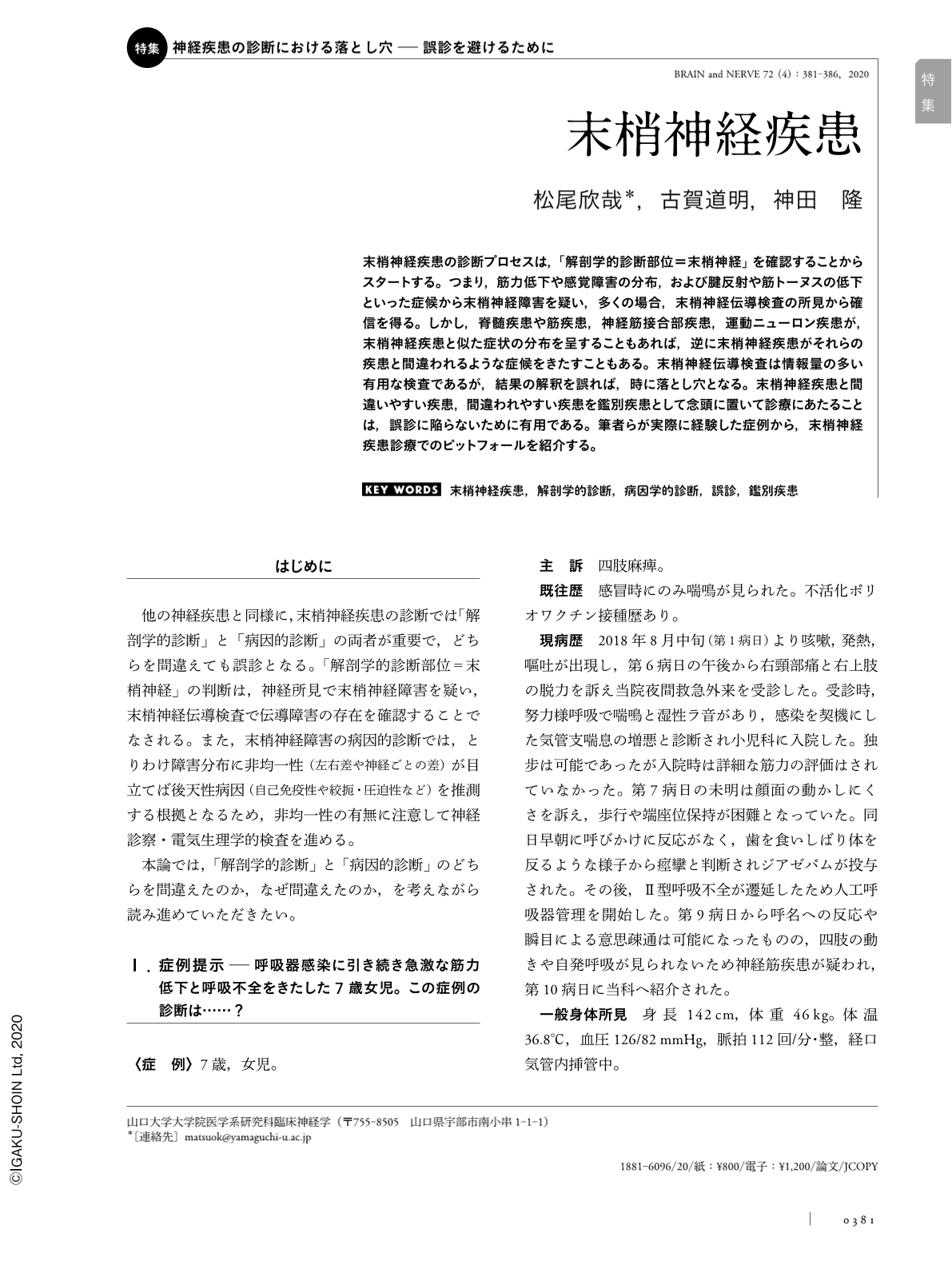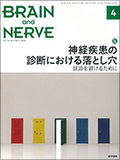Japanese
English
- 有料閲覧
- Abstract 文献概要
- 1ページ目 Look Inside
- 参考文献 Reference
末梢神経疾患の診断プロセスは,「解剖学的診断部位=末梢神経」を確認することからスタートする。つまり,筋力低下や感覚障害の分布,および腱反射や筋トーヌスの低下といった症候から末梢神経障害を疑い,多くの場合,末梢神経伝導検査の所見から確信を得る。しかし,脊髄疾患や筋疾患,神経筋接合部疾患,運動ニューロン疾患が,末梢神経疾患と似た症状の分布を呈することもあれば,逆に末梢神経疾患がそれらの疾患と間違われるような症候をきたすこともある。末梢神経伝導検査は情報量の多い有用な検査であるが,結果の解釈を誤れば,時に落とし穴となる。末梢神経疾患と間違いやすい疾患,間違われやすい疾患を鑑別疾患として念頭に置いて診療にあたることは,誤診に陥らないために有用である。筆者らが実際に経験した症例から,末梢神経疾患診療でのピットフォールを紹介する。
Abstract
The Diagnostic process of neurological disorders consists of anatomical and etiological diagnoses, and that of neuropathies usually starts with a suspicion of peripheral nerve disturbance based on neurological findings, which is subsequently confirmed by electrophysiology. However, there are numerous pitfalls in interpreting neurological features and electrophysiological data in the anatomical diagnosis process, possibly leading to misdiagnoses of “neuropathy” in patients with myelopathies, myopathies, neuromuscular junction diseases, or motor neuron diseases. We present the case of a 7-year-old girl showing acute flaccid quadriplegia with overt abnormalities in a nerve conduction study who was initially misdiagnosed with Guillain-Barré syndrome. In retrospect, we recognize several points suggestive of disorders other than neuropathy.

Copyright © 2020, Igaku-Shoin Ltd. All rights reserved.


